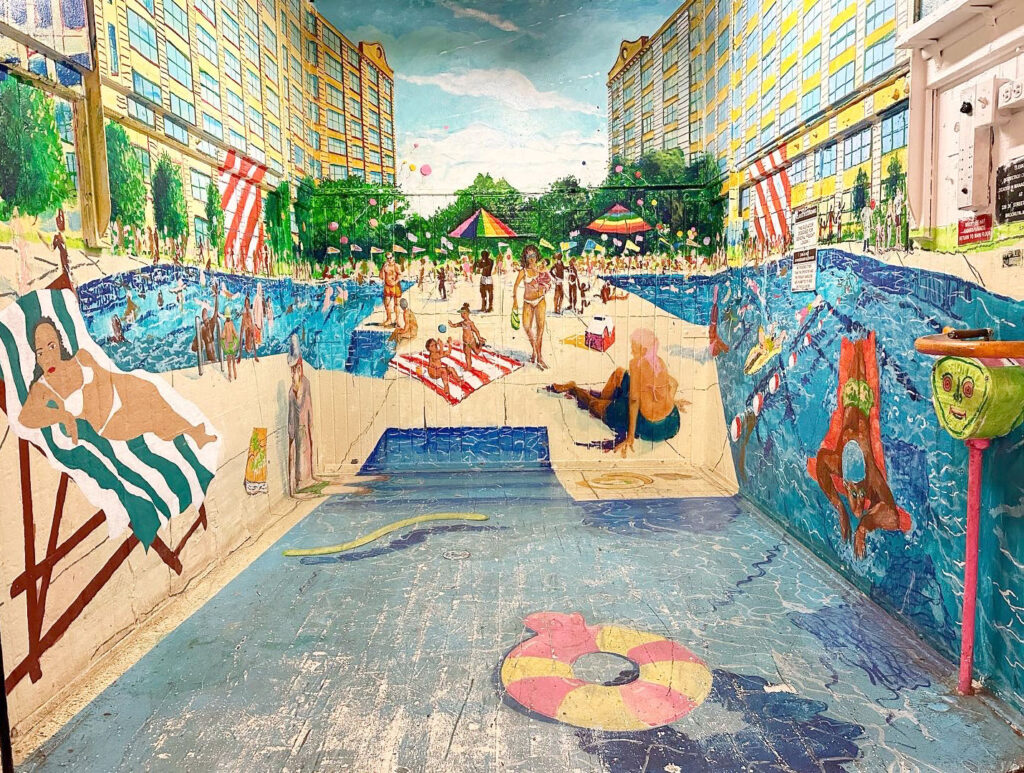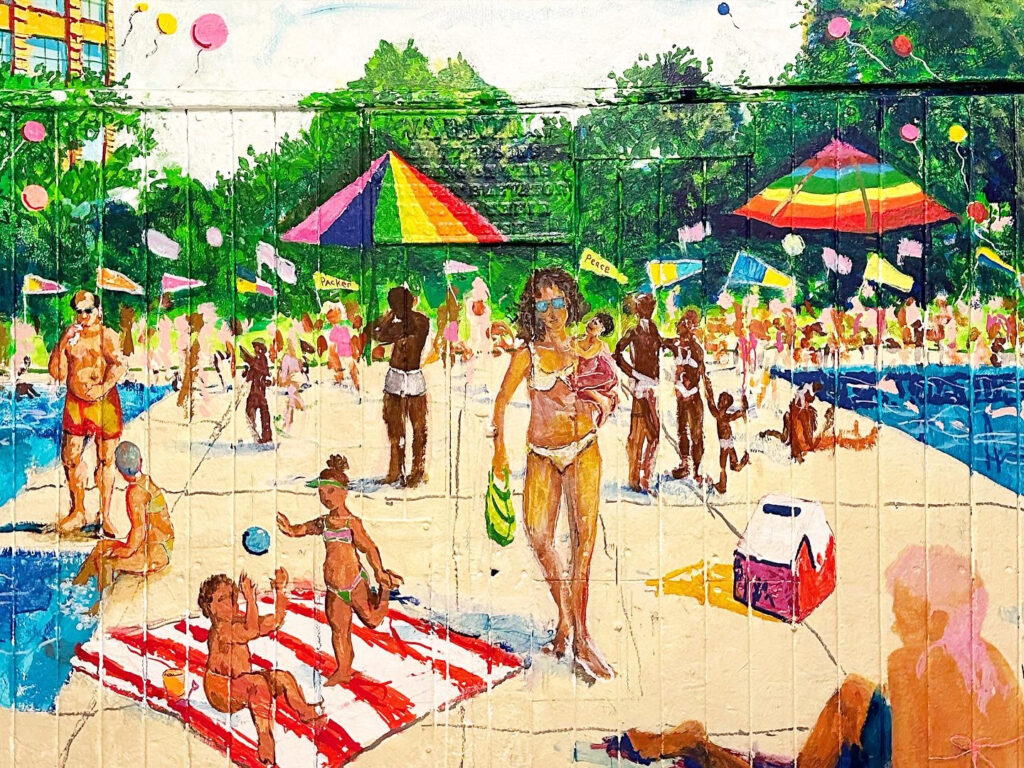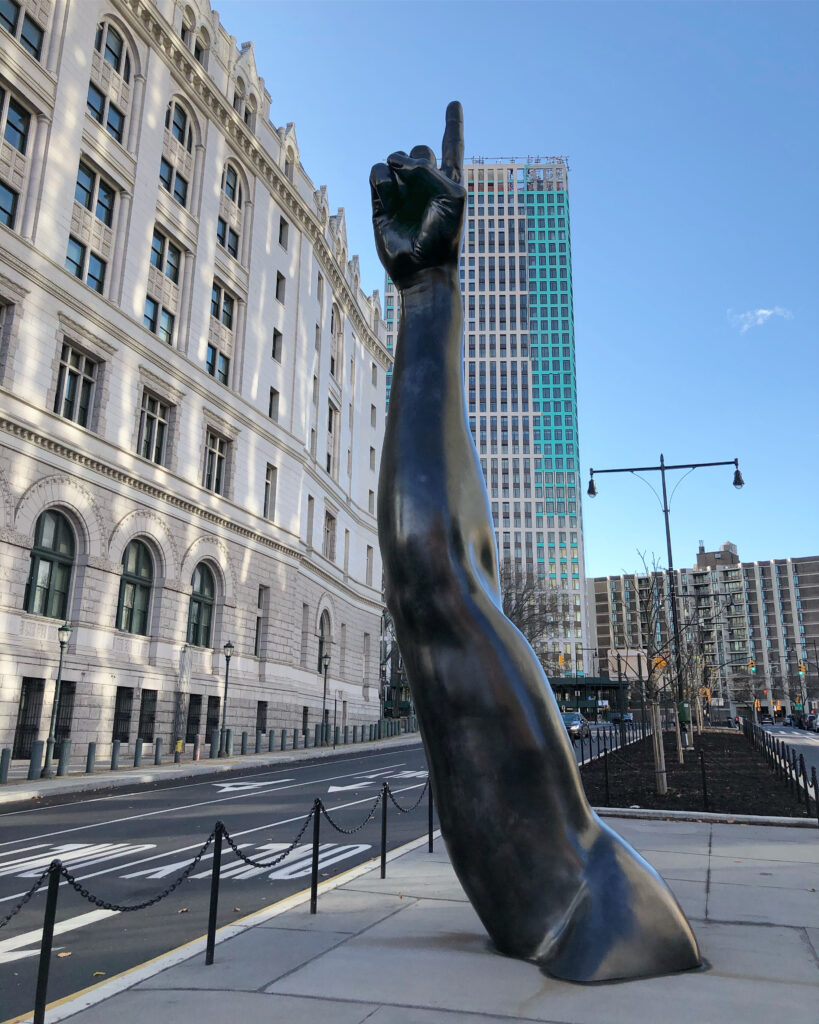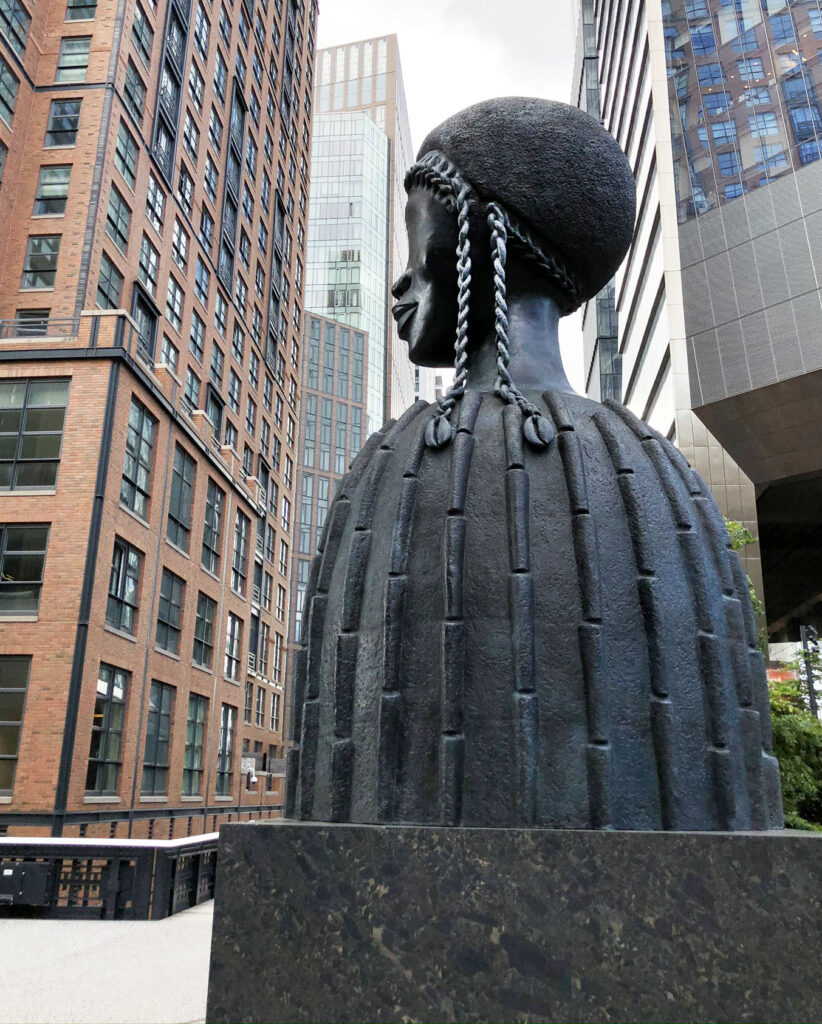
This sculpture, The Only Other, 2021, by the artist Midabi, was located in Union Square Park in NYC from June 2021- June 2022.
It is currently located adjacent to Palm Springs Art Museum in California.

This sculpture, The Only Other, 2021, by the artist Midabi, was located in Union Square Park in NYC from June 2021- June 2022.
It is currently located adjacent to Palm Springs Art Museum in California.




Brooklyn artist Ken Rush’s Poolevator is one of several works located in Industry City– organized by The Collision Project.
From The Collision Project about the work-
This installation represents both the reality and fantasy. The reality is depicted in the inspiring monumental architecture, while the fantasy emerges in the joyful addition of a swimming club with a celebration of swimming, sunbathing, recreation and play. For Rush, the work is a homage to Impressionist painters like Monet and Suerat, and the way that they depicted urban and rural pleasures. This is a group project between Rush and three of his students from High School Visual Arts at Packer Collegiate Institute in Brooklyn Heights.

Unity, was created by Hank Willis Thomas in 2019 as part of the Department of Cultural Affairs Percent for Art Program. The 22.5 foot sculpture is a replica of NBA player Joel Embiid’s right arm.
From the artist on the work (via Downtown Brooklyn)-
“The sculpture is an homage to and celebration of the unique and multi-faceted character of the borough of Brooklyn. The spirit of Brooklyn has always been about upward mobility and connection to roots. The large-scale sculpture of a bronze arm pointing toward the sky is intended to convey to a wide audience a myriad of ideas about individual and collective identity, ambition, and perseverance”.
Thomas will be speaking with UCLA professor and author Robin D.G. Kelley today (9/18/22) at 2pm The Broad Museum about his art practice, his activism, and his piece in the museum’s current exhibition, This is Not America’s Flag.
The program will be live-streamed on The Broad’s website and their Facebook page.


Artist Sophie Calle’s Here Lie The Secrets of the Visitors of the Green-Wood Cemetery, a 25 year long public artwork. The project debuted on April 29th and 30th, 2017.
From Creative Time’s website-
To inaugurate the project, the public was invited to Green-Wood Cemetery, a National Historic Landmark, in Sunset Park, Brooklyn, to privately unburden and inter their most intimate confessions.
During the two-day opening, in a setting nestled among the mausoleums and monuments of Green-Wood’s verdant rolling hills, visitors transcribed their secrets onto paper, and deposited them into the earth below, through a slot on a marble obelisk of Calle’s design. The artist was on hand during the two-day event to receive some visitors’ secrets.
The two-day performance was free and open to the public. Guests were invited to spend the day exploring the sculptures and monuments throughout Green-Wood, a tradition that dates back to the early 1800s. Free maps of the cemetery, specially designed to accompany Calle’s installation, were be available. Guided walking tours emphasizing the cemetery’s symbols and iconography were offered at no cost.
Visitors to the Cemetery can now see Calle’s installation during regular cemetery hours and independently deposit secrets into the marble obelisk. Calle has also pledged to return periodically over the next 25 years, each time the grave is filled, to exhume and cremate them in a ceremonial bonfire service and moment of remembrance.
Everyone has a secret to tell, now there’s a place to put one of yours.


From The High Line’s information page on this work-
Simone Leigh presents Brick House, a 16-foot-tall bronze bust of a Black woman with a torso that combines the forms of a skirt and a clay house. The sculpture’s head is crowned with an afro framed by cornrow braids, each ending in a cowrie shell. Brick House is the inaugural commission for the High Line Plinth, a new landmark destination for major public artworks in New York City. This is the first monumental sculpture in Leigh’s Anatomy of Architecture series, an ongoing body of work in which the artist combines architectural forms from regions as varied as West Africa and the Southern United States with the human body. The title comes from the term for a strong Black woman who stands with the strength, endurance, and integrity of a house made of bricks.
Brick House references numerous architectural styles: Batammaliba architecture from Benin and Togo, the teleuk dwellings of the Mousgoum people of Cameroon and Chad, and the restaurant Mammy’s Cupboard in Natchez, Mississippi. The sculpture contrasts sharply against the landscape it inhabits, where glass-and-steel towers shoot up from among older industrial-era brick buildings, and where architectural and human scales are in constant negotiation. Resolutely facing down 10th Avenue, Leigh’s powerful Black female figure challenges us to consider the architecture around us, and how it reflects customs, values, priorities, and society as a whole.
Leigh works across sculpture, video, installation, and social practice, stitching together references from different historical periods and distant geographical locations. As a sculptor, Leigh works predominantly in ceramics—a medium that she mastered early in her career—continually pushing the boundaries of her chosen material by working in new methods and larger scales. In her intersectional practice, Leigh focuses on how the body, society, and architecture inform and reveal one another. She examines the construction of Black female subjectivity, both through specific historical figures such as Josephine Baker and Katherine Dunham, and more generally through overlapping historical lineages across Europe, Africa, the US, and the Caribbean.
The High Line’s website also has some excellent videos and additional information on the making of the sculpture well worth checking out. This work was on view until May of 2021.

NEW YORK CLEARING by Antony Gormley was on view in Brooklyn Bridge Park from 2/4-3/27/20. The work consisted of a single line made of 11 miles of square aluminum tubing that looped and coiled without a beginning or end, “turning itself into an environment for the viewer that counters the grid of modernism and the city with swooping lines of energy”.
This is one of a series of art works that were part of Connect, BTS– a global public art initiative supported by the K-Pop Group BTS and organized by a group of curators under the direction of independent curator Daehyung Lee. The project took place in five cities on four continents with 22 contributing contemporary artists.

Barbara Kruger designed this mural, Untitled (Blind Idealism Is…) for the High Line in 2016. It is based on the quote “Blind idealism is reactionary” by Afro-Caribbean psychiatrist and political philosopher Frantz Fanon.
From the High Line website-
The original statement by Fanon, “Blind idealism is reactionary,” suggests that political and religious convictions stem from the situations from which they grow, not from the inherent nature of individual human beings. According to Kruger, the work reflects “how we are to one another” within “the days and nights that construct us.” These texts, along with Kruger’s own writings, resonate with particular potency in today’s political climate.
For more on this work at the time it was made, check out this interview with Kruger by The Intelligencer at New York Magazine.

This was one of the pieces from Neighborhood Reflections, eco friendly banners created last year for the Arts Gowanus Art Walk event in Brooklyn.

Artist Jim Rennert’s sculpture Listen, located in Midtown, Manhattan.